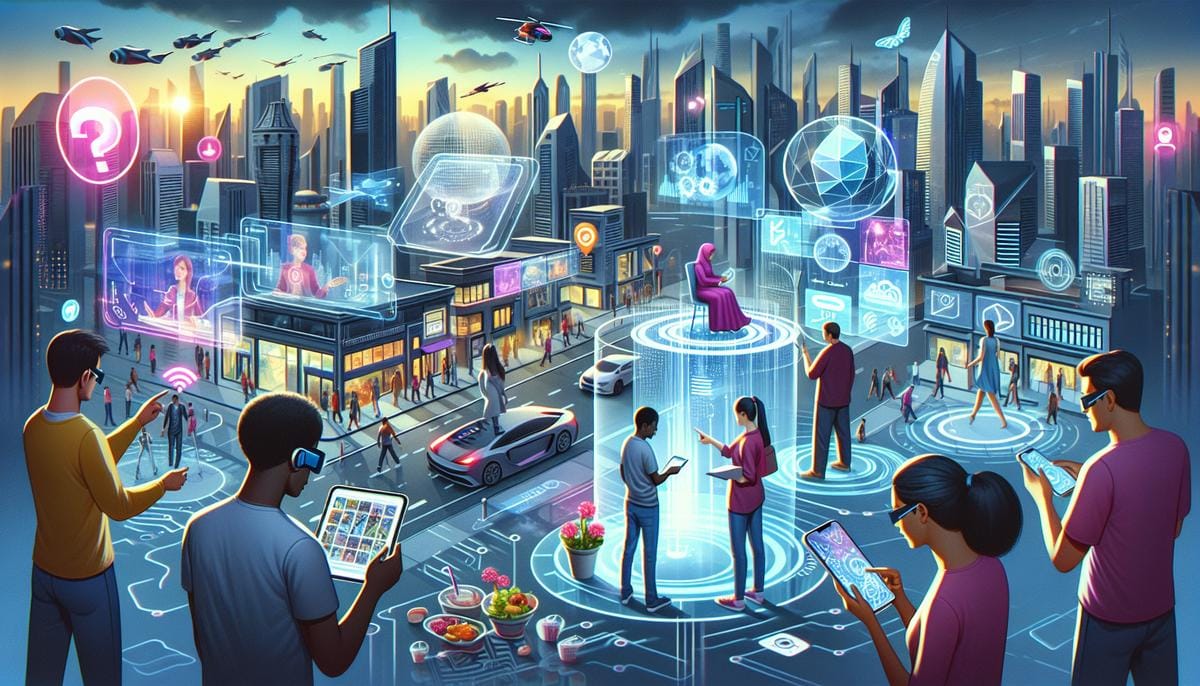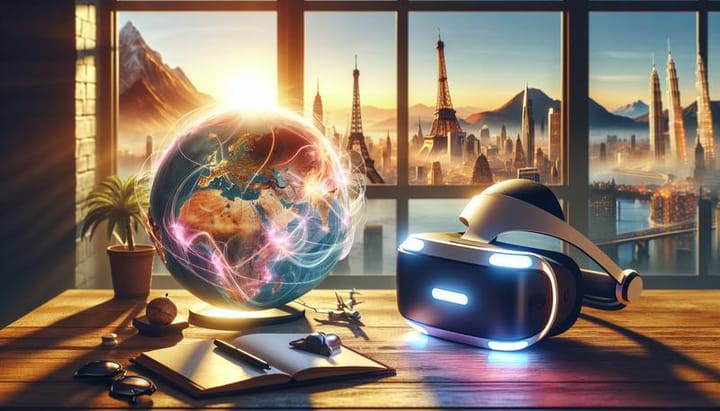From Sci-Fi to Reality: The Rise of Augmented Reality in Everyday Life

Introduction
Imagine a world where you could see directions right on the road in front of you, play a video game that blends with your surroundings, or even try on clothes without actually wearing them. Sounds like something out of a science fiction movie, right? Well, not anymore. Augmented reality (AR) is here, and it's changing the way we interact with the world around us. In this article, we'll explore the rise of AR in everyday life and how it's transforming everything from shopping to entertainment to education.
The Basics of Augmented Reality
Before we delve into the impact of AR, let's first understand what it is. Augmented reality is a technology that superimposes computer-generated images, sounds, or other data onto the real world. This creates an enhanced version of reality, where virtual objects coexist with physical ones. AR can be experienced through devices such as smartphones, tablets, smart glasses, and headsets.
AR vs. VR: What's the Difference?
People often confuse AR with virtual reality (VR), but there's a significant difference between the two. While AR augments the real world with digital elements, VR creates a completely virtual environment that replaces the real world. In other words, AR adds to reality, while VR creates a new one.
The Evolution of Augmented Reality in Popular Culture
AR has been a staple in science fiction for decades. From the "holodeck" in Star Trek to the heads-up display (HUD) in Iron Man, we've long been fascinated by the idea of enhancing our reality with technology. But AR isn't just a sci-fi concept anymore; it's quickly becoming a part of our daily lives.
From Fiction to Reality
The leap from fiction to reality began with the advent of smartphones and other mobile devices. As these gadgets became more powerful and equipped with advanced sensors and cameras, they paved the way for AR apps and experiences.
Pokemon Go: A Game-Changer
One of the most significant milestones in AR's journey to mainstream adoption was the release of Pokémon Go in 2016. This mobile game took the world by storm, with millions of players venturing outdoors to catch virtual creatures that appeared in their real-world surroundings. Pokémon Go not only introduced AR to a wide audience but also proved its potential for mass appeal and commercial success.
AR in Everyday Life: Beyond Gaming
While gaming might have been the catalyst for AR's popularity, its applications extend far beyond entertainment. Augmented reality is now transforming various industries, including retail, education, healthcare, and more.
Retail Revolution: Try Before You Buy
In the world of retail, AR is revolutionizing the shopping experience. Brands and retailers are using AR to enhance customer engagement and satisfaction. For example, furniture giant IKEA's AR app allows customers to visualize how products would look in their homes before making a purchase. Similarly, fashion and beauty brands offer virtual try-on experiences, enabling consumers to see how clothes, accessories, or makeup products would look on them without physically trying them on.
Educational Enhancements: Learning Comes to Life
The education sector is also reaping the benefits of AR. Interactive AR experiences can bring complex concepts to life, making learning more engaging and accessible. Whether it's visualizing historical events, exploring human anatomy, or understanding mathematical principles, AR can enhance the educational experience for students of all ages.
Healthcare Advancements: A New Dimension of Care
In healthcare, AR is being used for both training and treatment. Medical professionals can use AR to simulate surgeries or visualize patient anatomy before a procedure. Additionally, AR can assist patients in various therapies, such as physical rehabilitation, by providing interactive exercises and real-time feedback.
Challenges and Considerations
Despite its many benefits, the integration of AR into everyday life is not without challenges. User privacy and security are major concerns, as AR devices often require access to personal data and cameras. Additionally, there's a need for standardization in AR technology to ensure compatibility and interoperability across different devices and platforms.
The Future of AR: Where Do We Go from Here?
The future of AR is bright, with endless possibilities for innovation. As technology advances, we can expect AR to become even more immersive and integrated into our daily routines. From enhanced communication to smarter cities to advanced manufacturing, AR holds the potential to reshape numerous aspects of our lives.
Conclusion
Augmented reality has come a long way from its sci-fi origins. Today, it's a rapidly growing technology that's making its mark on various facets of our everyday lives. As AR continues to evolve, we'll likely see more innovative applications that will transform the way we work, learn, play, and interact with the world around us. From sci-fi to reality, the rise of augmented reality is indeed a game-changer in the truest sense.


